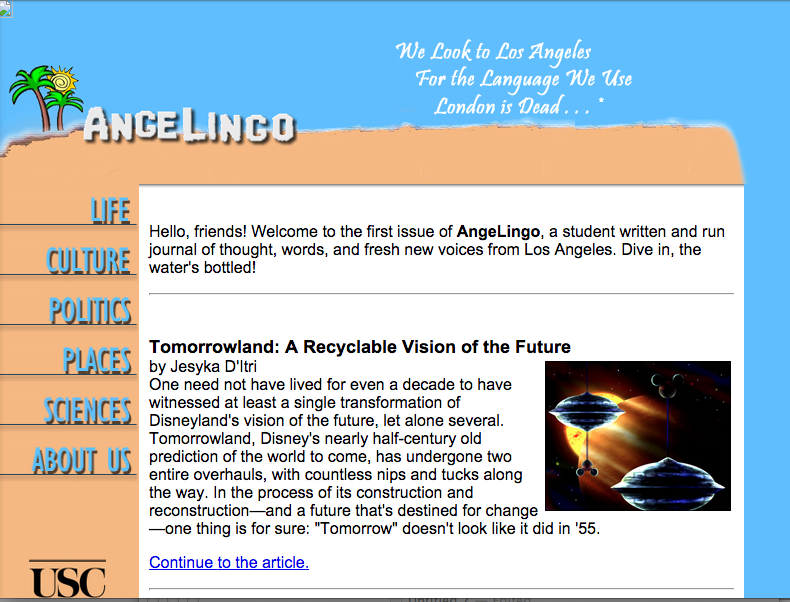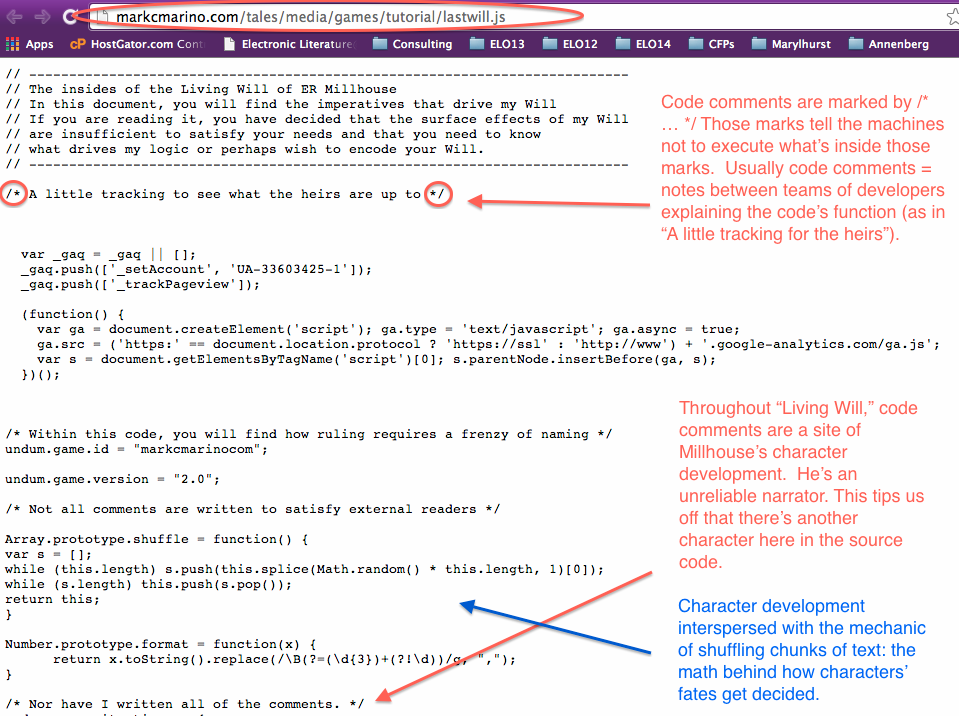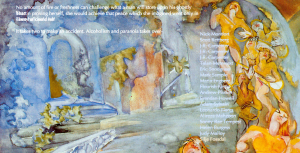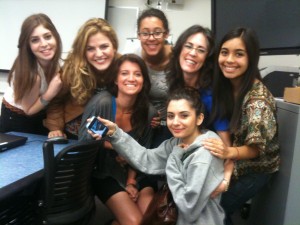EXEMPLARY STUDENT WORK
2004: ANGELINGO

Launched spring 2004, each page of AngeLingo had to be hand-coded in HTML. Cascading Style Sheets hadn’t been invented yet!
First-in-U.S. online journal to publish essays produced in comp/rhet writing classes, AngeLingo is entirely student-produced. Editors, writers, designers and coders launch one issue each semester of the best essays authored in the USC Dornsife College Writing Program’s Advanced Writing seminars. AngeLingo, which launched the careers of several writers and now publishes under the name SCribe, celebrated its first decade of publication in spring 2014! I co-founded this journal with Norah Ashe-McNalley.
2007: UNDERGRADUATE WRITERS’ CONFERENCE
Students from across disciplines at USC share their writing in small, interdisciplinary panels and compete for cash prizes in four categories. I met and mentored student writers from many disciplines, including engineering. The structure of the event and the text on the website remain what I wrote and designed in 2007.
2011: DIGITOOLSC
“F2F In/And The Undergraduate Classroom” was an experimental class where we “rapidly prototyped” a group project. Working predominantly in virtual environments and meeting one week each month face-to-face in a classroom at USC Annenberg, students decided to make a web app that crowdsourced the classes offered for spring 2012 registration that offered digital tools. Students in the fall 2011 built DigiToolSC, a web app optimized for mobile, to gather all the digital classes being offered during Spring 2012 at USC. Students launched DigiToolSC the first day of registration for spring 2012 classes. It garnered over 8000 hits during spring registration season.
This explanatory video was made by Will Ford Conway & Nikki Yep.
2011: Occupy Global Map authored by eight undergraduates in my “Networked Cultures” class. Lead author Nicole Buckner pinned Occupations when the movement was first starting 27 September 2011. When map views jumped by 30,000 literally overnight, we deduced it was circulated by Anonymous.
2012: MEDIA-RICH GOOGLE MAP AS COMMUNICATION INTERFACE
Spring 2012 students examined mapping as a communication interface. They built a virtual interactive campus tour for prospective USC students who couldn’t get to the campus for a tour, and for current students who wanted to know Hidden USC. After collaboratively deciding what to feature and doing all necessary research — including comparative market analysis of what the USC Admissions Office already offered our target population — each Spring 2012 student dropped 5 media-rich pins created on the map. They built and executed two live, interactive games, one on Twitter and one on Facebook, to promote it. They launched the games at a live event for prospective USC Annenberg students. This Storify depicts that process.
2012: GRASSROOTS CAMPAIGN FOR HEISMAN TROPHY; TRANSMEDIAL BRANDING
TRAINING FOR OUR CAMPAIGN: ANALYZING BEST PRACTICES
REFLECTING ON WHAT THEY LEARNED MAKING THE ANALYSIS
Fall 2012 students focused on corporate transmedial branding, creating teams that compared the campaigns of Coke, Pepsi and Red Bull. Their analyses became a lens through which to view the brand engagement as it plays out in social media. They used this knowledge to run a 15-week social media campaign supporting USC quarterback Matt Barkley’s bid for the Heisman. That dynamic campaign went through three distinct iterations in response to real-world conditions such as athlete performance and team performance, not just USC players but all gameplay in the competitive field. As conditions changed, we had to pivot quickly, updating our tactics and strategy to reflect sudden new realities. Students worked in partnership with USC’s Sports Information Department.
2013: SPINE POETRY SOCIAL MEDIA CAMPAIGN
My students built a very effective social media campaign to promote the first Showcase of Electronic Literature I co-curated at the Library of Congress. It was a small, handpicked seminar of four students and two faculty–me and Jesse Stommel. To visualize the show’s setting at the Library, we conceptualized the materiality of books circulating in digital environments. We also needed something entirely participatory and easy to do. Spine Poetry was a brilliant solution for these particular specifications.
Students shot & edited this explanatory video (above), and the campaign took off, garnering 1700 hits on its first day! We intended the campaign both to drive foot traffic to the E-Lit Showcase, and also to permit virtual participation from people who couldn’t travel to Washington D.C.
2014: TEACHING STUDENTS HOW TO READ A STORY LOCATED IN SOURCE CODE

“Living Will” is a story told in two places: at the user interface, the story you access by typing in the URL; and in that story’s source code.
2014: STUDENTS MAKE ELECTRONIC LITERATURE
Generated poems, once initiated, will run endlessly in a browser. Students copied the JavaScript code by Prof. Nick Montfort (Assoc. Prof., M.I.T.) from his original landscape poem, Taroko Gorge. Then they used the JavaScript to author their own poems which find new literary applications for the “endless” quality of the generator.
GENERATED POEMS

Silje used text from The Great Gatsby and Save Me the Waltz to re-create the Fitzgeralds’ shattered marriage.
Silje F. dramatized the late, tense years of Scott and Zelda Fitzgerald’s marriage by staging quotations from The Great Gatsby and Save Me the Waltz as an accusatory dialogue. This is a savvy use of the generator, because the dialogue rarely (if ever) repeats, which imparts the feeling of not being able to escape the bad marriage. The watercolor art in background is Zelda’s. When Silje’s friends told her the poem was beautiful, she added a jarring audio track to evoke the distance between the Fitzgeralds’ beautiful appearance and shattered marriage.
Patrick D., who had never worked with JavaScript before this class, eliminated lines of code to see how the output would render. Playing around, Patrick reduced Scott Rettberg’s Tokyo Garage to one outputted line and tinkered with it to exaggerate its overlap: brilliant of Patrick to see in the bold yellow letters a visual poem of Tokyo’s skyline.
Anders G‘s “Take Gonzo” re-situates the landscape poem into a Panoptic, NSA-world where words are redacted and censored; the only alternative for secret communication is to write in a coded language, which he invented as graphical elements that run across the top of the page. Mouse over some of the generated lines to see lines being redacted. The list of previous Taroko-adaptation authors on the right of the screen is a source text to decode the message written in a secret language across the top of the poem.
Clara M, a journalism major from Spain, says she loves movies but can never remember them, so she remixed famous recognizable lines into one endlessly generating mashup, often with funny results.
OUTSOURCE MY STUDY ABROAD — A NETPROV
Study Abroad in a City Just Like Yours!™ Collaborating with the students of Rob Wittig at the University of Minnesota Duluth, my students at the University in Bergen (Norway) created “Outsource My Study Abroad!” a locative story set in Bergen and Duluth. Students “visited” each others’ cities via street view in Google Maps and picked seven locations they wanted to “explore” via the local students. Pinning site-specific questions to the maps, students in their native city posed in photos that the abroad students had asked for and wrote captions that “made memories” virtually. The Tumblr where all the photos & captions are housed is a database of “memories” that individual students then remixed into their own unique “study abroad” experiences.
Outsource My Study Abroad! database of Bergen and Duluth students’ expeditions.
Sample individual “Abroad” Remixes
—Global. Whole. Hearty.
—Study-Hubby Abroad in Bergen
—My Semester in Duluth
—Piet’s Abroad Experience
Duluth students’ requested expeditions in Bergen
Bergen students’ requested expeditions in Duluth
KATHI INMAN BERENS TEACHING AWARDS
USC Center for Excellence in Teaching. 1st non-tenure track faculty member appointed to CET. 2006-2009.
Distinguished Fellow, USC Center for Excellence in Teaching, 2009-present.
Teaching With Technology. USC Provost’s Office. 2005.
Teaching Has No Boundaries Award. USC Office of Student Life. 2005.
USC’s Fund for Innovative Undergraduate Teaching. Start up grant to found first student-made online multidisciplinary journal. 2003.
USC General Education Teaching Excellence Award for Advanced Writing. 2003.
U.C. Berkeley Outstanding Graduate Student Instructor Award. 1995.
KATHI INMAN BERENS PHILOSOPHY






